Continuing our series on Women’s History Month, we look back at the fashion in the 1920’s. By that time women could vote, express their fashion sense with easier, less constricted clothes and enter more jobs in the male-dominated work-field.
After the end of World War 1, people wore clothing for simplicity and comfort rather than for restrictive design. This was relevant to the end of the war, since there was a modernist approach to women’s fashion. This time period was known as the Roaring Twenties. It began as a modernist approach in women’s fashion influencing looser waists, higher hemlines, fitted sleeves and lighter fabrics. It was a celebration of freedom to dress for movement and live a more exciting and fulfilling life.
A lot of women’s fashion borrowed inspiration from men’s garments with sport-influenced clothes with the use of lighter fabrics. Clothing became more practical and easier to make for designers.
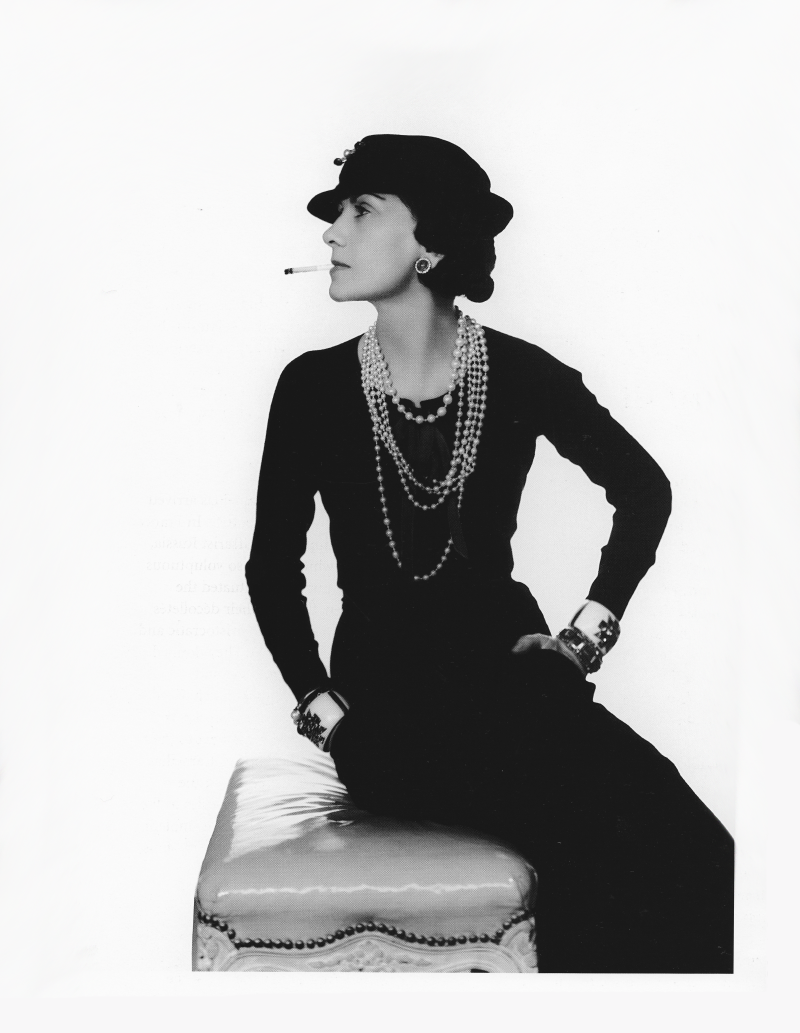
“Fashion is not something that exists in dresses only. Fashion is in the sky, in the street, fashion has to do with ideas, the way we live, what is happening.”
Coco Chanel
A pioneer designer who designed for the modernist woman was Coco Chanel. Her signature was designing for clothes in the spirit of post World War I era with simplicity & functionality.
She created relaxed-fit suits featuring her signature boxy jacket and matching skirt. Taking inspiration from the the bespoke tailoring of suits with classic elegance, she experimented with the use of menswear style.
Coco Chanel also created garments with jersey fabrics for easier drapery in construction: she designed her items with loose cardigans, pullovers, short skirts and silk blouses. Stylish and timeless design was a key influence to her brand.
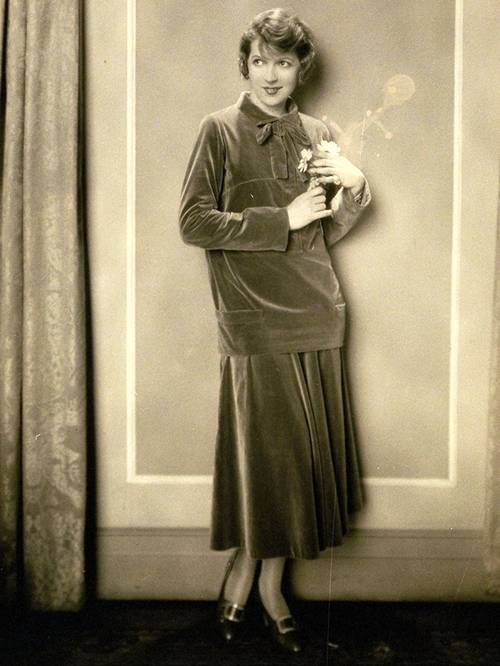
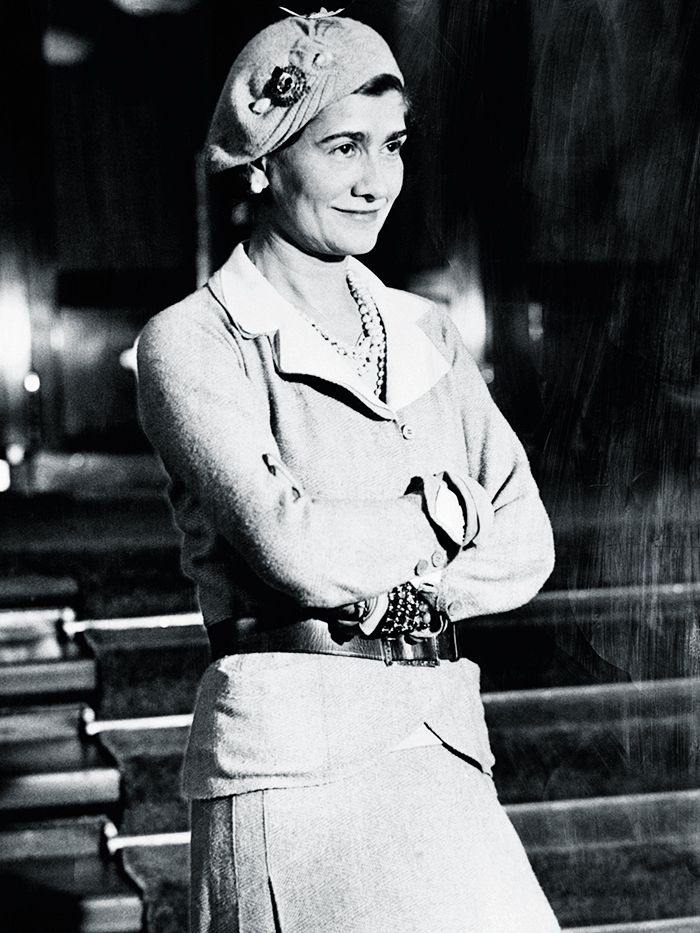
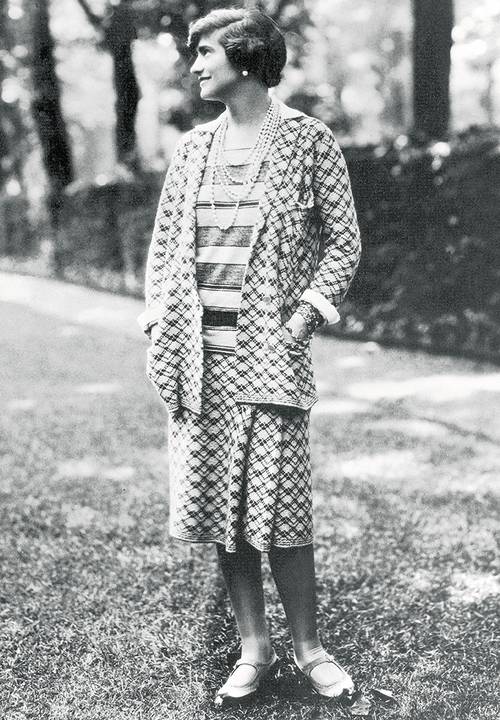
With the development of new knitwear in the 1920s, clothing was made to be comfortable to wear and easy to pack in suitcases. The active modern woman played sports and traveled often, they would be influenced to wear cardigan suits, hip length sweaters and pleated jersey skirts.
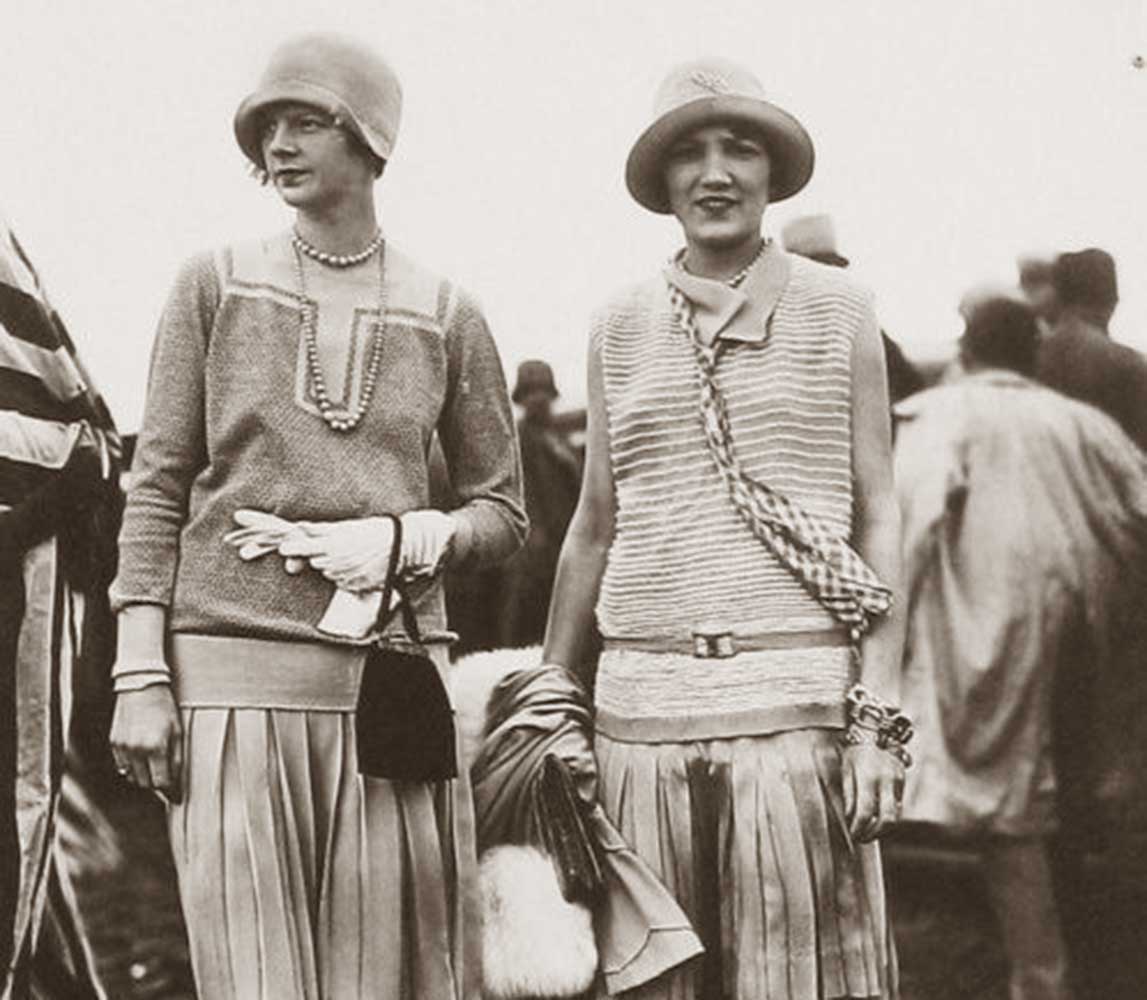

Because women dressed for their leisurely activity, they also found interest in dressing for the nightlife during the Jazz Age. Formally known as “Flappers“, these women would dress to dance the night away with their stylish and relaxed-fit dresses.


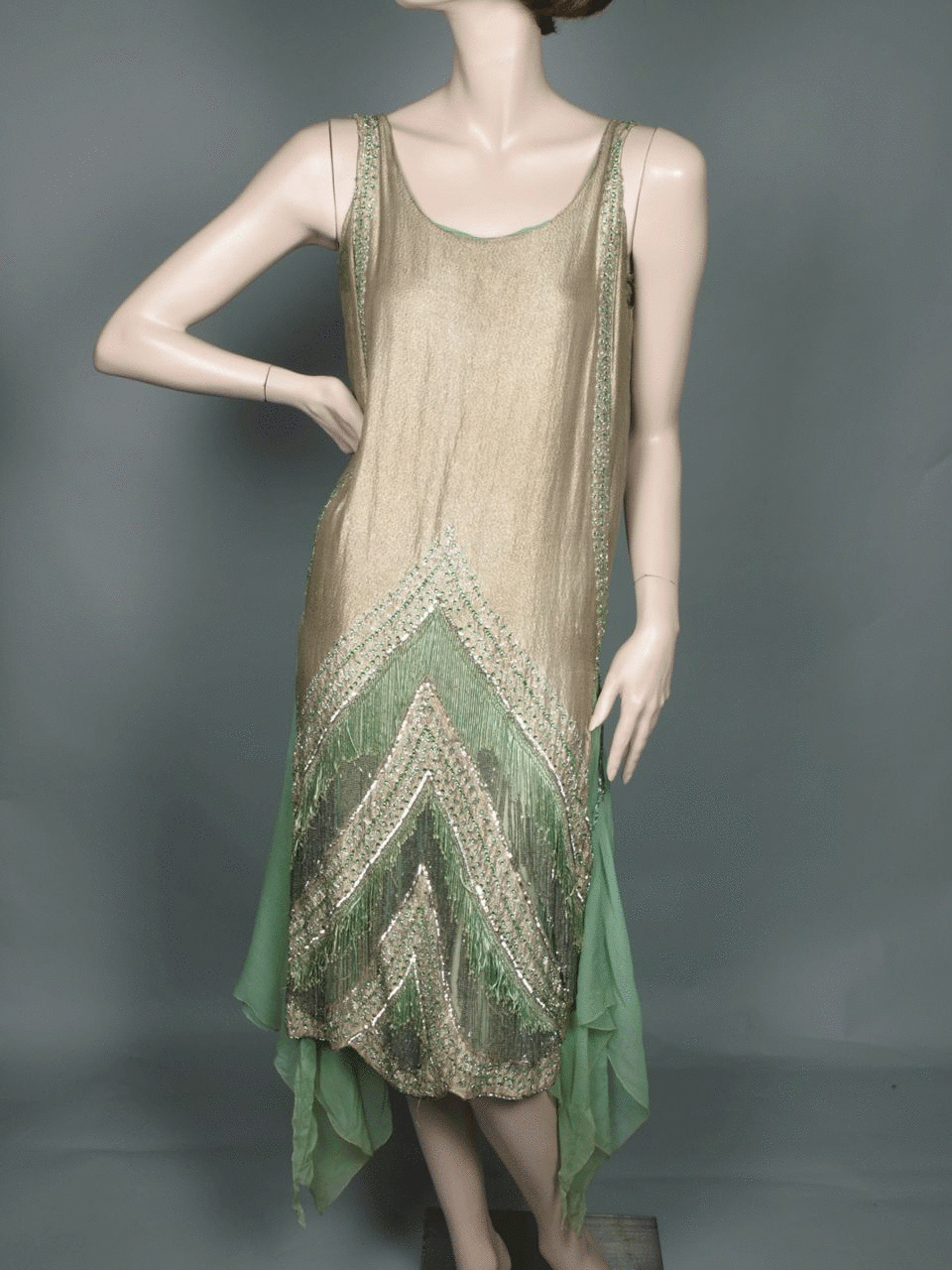
Flapper dresses usually had a low waist design with accentuated belts, geometric pattern motifs above the hem, embroidery or beading, sleeveless design, slip on silhouettes with thin shoulder straps and or scalloped hems.
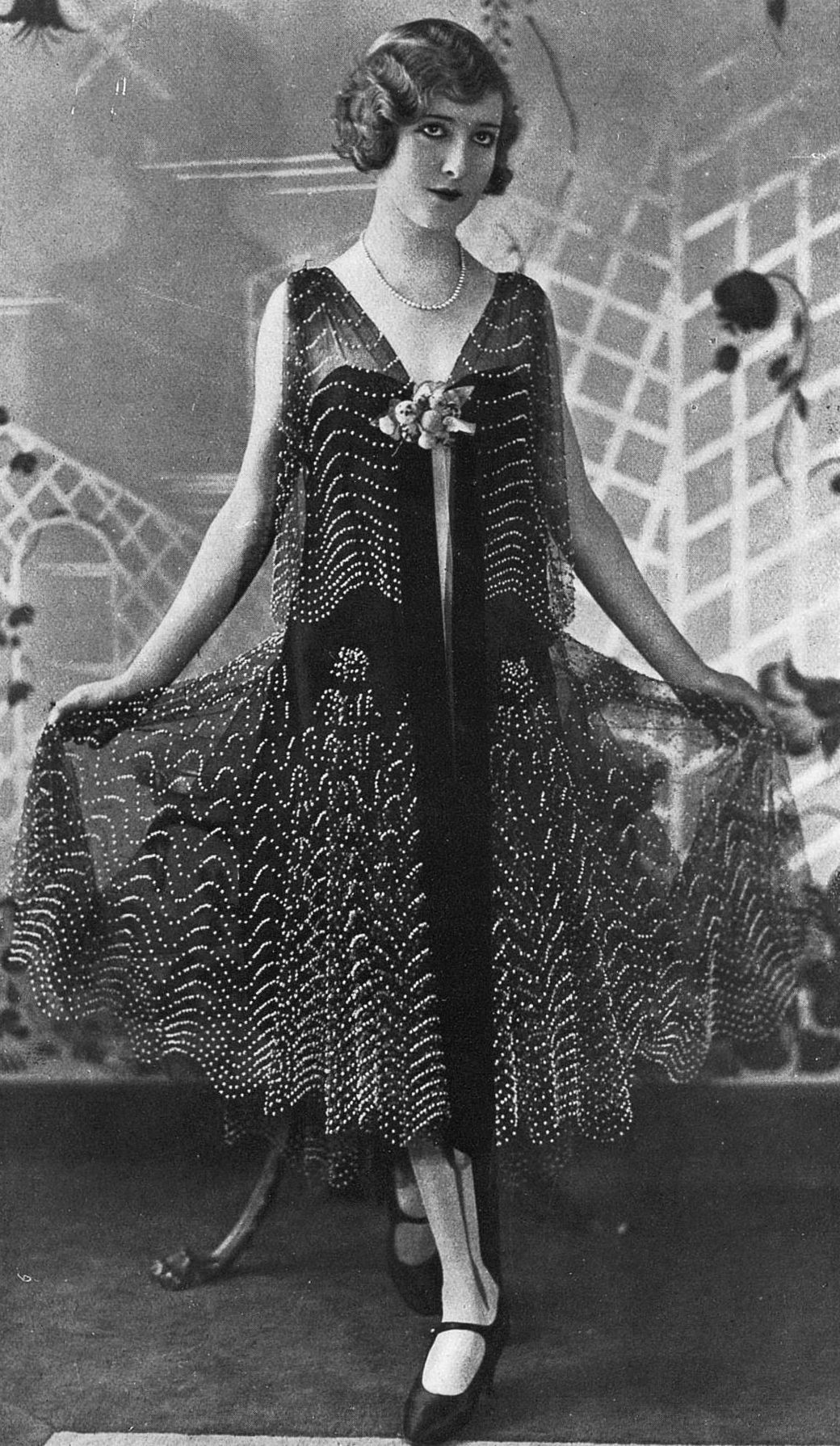

Flapper dress designed by Jean Patou
Anita Page wearing a Flapper Dress
One of the most influential designer in the 1920s was Paul Poiret who was nicknamed the “prophet of simplicity“. He praised his design philosophy as a way to liberate women who were “enslaved to a corseted waists since the Renaissance era”.
He replaced classic 19th century pattern dependent tailoring with inspired draping of fabric and let garments fall from the shoulder. With his experimentation of bold shapes inspired by the natural female form, he also wanted to create clothing for fantasy with his influence of costumes from the Russian Ballet in the late 1910s. Many elements of his work would have empire waistlines, exotic turbans, striking colors, harem pants, colorful beading and African kaftans. He was known to fuse together influence of fashion along with theater and the culture of the artworld.

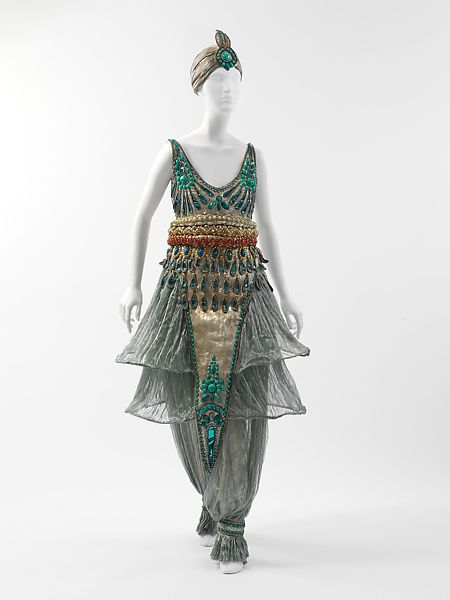
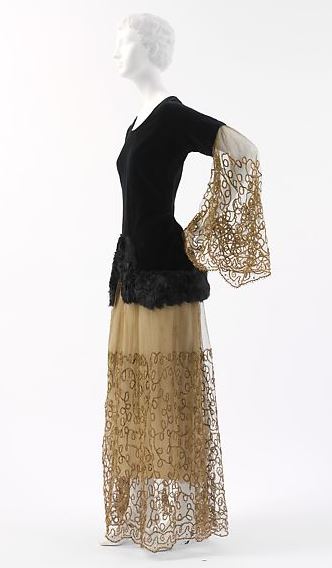
Another noted designer of that era was Mariano Fortuny who was highly praised for his innovative use of micro-pleated silks that were created in tubular shapes. The Spanish designer trademark dress was the Delphos, heavily inspired by Greek clothing. These dresses were created with finely pleated silk falling like a Greek column. Other features included wide scoop neckline with full length dresses. This allowed women to dress with stylized design without the constrictions of dressing with form fitting garments.
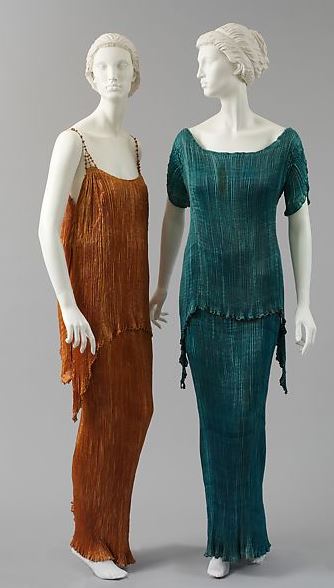
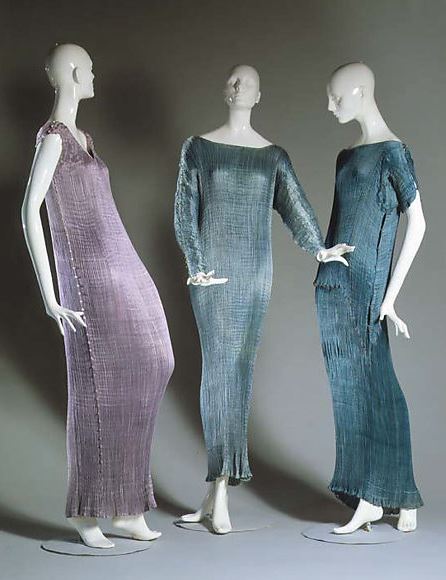
With the impact of post war modernism and a new approach to living life freely, we can predict that during unprecedented times of struggle, people will begin to dress in hopes for a new future and lifestyle.
Women who dressed freely in the 1920s wanted to celebrate their new lives, grow into a more modern society and push for change in the political world. This can be said for the modern woman in today’s world. The working woman usually dresses for comfort while working at home, but still look forward to dressing up for the upcoming occasion.
We still follow fashion trends on social media and look forward to the next looks featured on the runway. We see fashion as a way to escape into our own fantasy and dress for ourselves, not for others.
